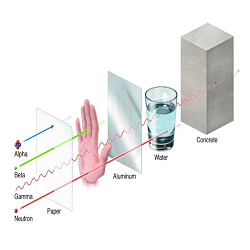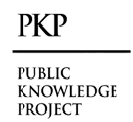Radiation: Types, Natural sources, and Industrial Sources
Keywords:
Radiation: Types, Natural sources, Industrial SourcesAbstract
The world is naturally radioactive and approximately 82% of human-absorbed radiation doses, which are out of control, arise from natural sources such as cosmic, terrestrial, and exposure from inhalation or intake radiation sources. In recent years, several international studies have been carried out, which have reported different values regarding the effect of background radiation on human health. Gamma radiation emitted from natural sources (background radiation) is largely due to primordial radionuclides, mainly 232Th and 238U series, and their decay products, as well as 40K, which exist at trace levels in the earth's crust. Their concentrations in soil, sands, and rocks depend on the local geology of each region in the world. Naturally occurring radioactive materials generally contain terrestrial-origin radionuclides, left over since the creation of the earth. In addition, the existence of some springs and quarries increases the dose rate of background radiation in some regions that are known as high level background radiation regions. The type of building materials used in houses can also affect the dose rate of background radiations. The present review article was carried out to consider all of the natural radiations, including cosmic, terrestrial, and food radiation
Downloads
References
Shahbazi-Gahrouei D. Natural background radiation dosimetry in the highest altitude region of Iran. J Radiat Res. 2003;44:285–7. [PubMed] [Google Scholar]
Sathish LA, Nagaraja K, Ramachandran TV. Indoor 222Rn and 220Rn concentrations and doses in Bangalore, India. Radiat Prot Dosimetry. 2012;151:344–53. [PubMed] [Google Scholar]
Kumar S, Singh S, Bajwa BS, Singh B, Sabharwal AD, Eappen KP. Indoor inhalation dose estimates due to radon and thoron in some areas of South-Western Punjab, India. Radiat Prot Dosimetry. 2012;151:112–6. [PubMed] [Google Scholar]
Nakamura T, Uwamino Y, Ohkubo T, Hara A. Altitude variation of cosmic-ray neutrons. Health Phys. 1987;53:509–17. [PubMed] [Google Scholar]
Stone JM, Whicker RD, Ibrahim SA, Whicker FW. Spatial variations in natural background radiation: Absorbed dose rates in air in Colorado. Health Phys. 1999;76:516–23. [PubMed] [Google Scholar
Kam E, Bozkurt A. Environmental radioactivity measurements in Kastamonu region of northern Turkey. Appl Radiat Isot. 2007;65:440–4. [PubMed] [Google Scholar]
Bozkurt A, Yorulmaz N, Kam E, Karahan G, Osmanlioglu AE. Assessment of environmental radioactivity for Sanliurfa region of southeastern Turkey. Radiat Meas. 2007;42:1387–91. [Google Scholar]

Downloads
Published
How to Cite
Issue
Section
License

This work is licensed under a Creative Commons Attribution 4.0 International License.
Current Clinical and Medical Education













